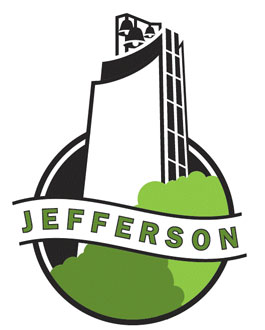Wastewater Department
Wastewater Department
Supervisor
Danny Moranville
605 W Russell
Phone: 515-386-4711
Mission Statement
The mission of the Wastewater Department is to efficiently maintain flow in the city sanitary and storm sewers for the protection of people and property. To this end, the division is responsible for the maintenance of sanitary sewers, storm sewers, associated pipes, catch basins, and pump stations.
Sewer Maintenance
As well as operation and maintenance of the Wastewater Treatment Plant the Sewer division maintains approximately 25 miles of sanitary sewer, 25 miles of storm sewer system and 6 lift stations throughout the City of Jefferson. Catch basin and manhole repair, jetting, flushing and cleaning the lines are also part of this division’s daily tasks. The division also does televised inspection of lines.
Wastewater Treatment Plant History
During the past several decades there has been an ever increasing awareness among the people of Iowa concerning the wasteful use of energy and the impact of needless pollution in our lakes, streams and water supplies. The Federal Government and the State of Iowa, in recognizing these problems, has required that all municipalities treat their wastewater (in the most energy efficient way) to a quality which will have no harmful effect on the receiving stream. The modern plant was designed and built in order to meet the more stringent water quality standards that have been made mandatory by the U.S. Environmental Protection Agency and the Iowa Department of Natural Resources.
The first plant built for the City of Jefferson consisted simply of an Imhoff tank and sand filters. This type of plant soon became overloaded and ineffective as the population and demand increased. The second plant, constructed in 1946, was built in order to meet the increased loading. This plant consisted of settling basin, trickling filters, a sludge digester and drying beds.
A plant of this type was designed to provide adequate treatment in accordance with the most advanced technology of the time and was expected to have a “life” of approximately 20 years. This facility had a capacity to handle a flow of 600,000 gallons per day and serve a population of 4,200 persons.
The third facility is an extended aeration activated sludge plant utilizing the best technology currently available. Planning and design work for this facility began in 1971 and was completed in 1978. Construction began in 1978 and was completed in the fall of 1980. Construction was accomplished by Spencer Construction Company at a total cost of $1,579,260. This plant had the capacity to handle an average flow of 1,000,000 gallons per day with a short-term ability to treat 2,400,000 gallons per day. This capacity would serve a population of 6,650 persons plus a moderate industrial loading. This project was funded in the following proportion: 75% Federal, 5% State and 20% City.
The current plant is a renovation of the third plant planning. Design work began in 2004 with construction beginning in late 2004 and ending in 2005. All the original buildings and tanks were left in place with major changes to all of them. In the preliminary treatment the communitors were replaced with a mechanically cleaned bar screen. The grit classifier has been replaced with a new one. The aerated grit tank was left in place but all the air lift equipment was replaced with new. All three aeration tanks were sand blasted, repainted and the course bubble diffusers were replaced with more efficient fine bubble diffusers to help lower ammonia nitrogen levels to meet state regulations. A Bio-solids building has been added which contain WAS pumps, decant pumps, an aeration blower and a sludge thickener. A final clarifier has been added to help handle higher flows and aluminum covers were added to all three clarifiers to stop freezing in inclement weather. The final change made to the wastewater plant was the elimination of chlorine as disinfection and the addition of ultraviolet disinfection. The reason for the addition of ultraviolet disinfection was to meet state regulations for receiving streams. The cost of the final upgrade was $4,500,000.00 and funded by State Revolving Loan Fund money and City revenue.
